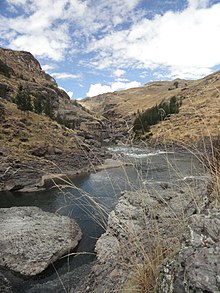Melica brasiliana, is a grass species in the family Poaceae that is endemic to Brazil and southern South America.
Melica scaberrima, is a species of grass that can be found in Yunnan, China, Nepal, Pakistan and northern part of India.
Melica dendroides is a grass species in the family Poaceae that is endemic to southern part of Africa.
Melica racemosa is a species of grass that is endemic to South Africa.
Melica hyalina is a species of grass found in Brazil and southern South America.
Melica glabrescens is a species of grass found in Buenos Aires and Río Negro, Argentina.
Melica minuta is a species of grass that can be found in North Africa, Western Asia, on Iberian Peninsula and in Southeast Europe.
Melica rigida is a species of grass found in Argentina, Brazil, and Uruguay.
Melica parodiana is a species of grass found in Buenos Aires, Argentina and Uruguay.
Melica rectiflora is a species of grass in the family Poaceae. It is native to Greece and Crete.
Melica riograndensis is a species of grass that is endemic to Brazil.
Festuca abyssinica is a species of grass which is endemic to Africa.
Festuca actae is a species of grass which can be found in New Zealand.
Festuca donax is a species of grass which can be found in Africa and Macaronesia.

Festuca beckeri is a species of grass which can be found in Central and Western Asia, and also in Europe.
Festuca psammophila is a species of grass which is endemic to Central Europe.
Festuca porcii is a species of grass which can be found in Central, Eastern, and southeastern parts of Europe.
Festuca polycolea is a species of grass which is endemic to India.
Festuca pilgeri is a species of grass which is endemic to East Africa.
Festuca picturata is a species of grass which can be found in Central, Eastern and southeastern Europe.

